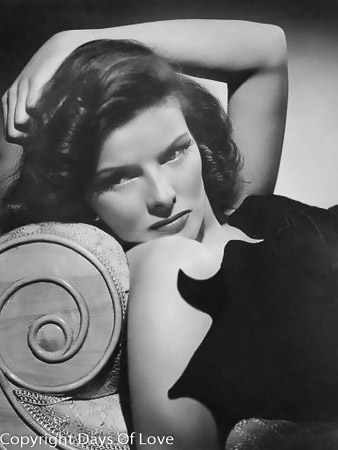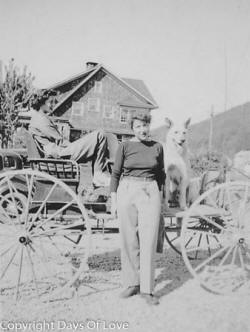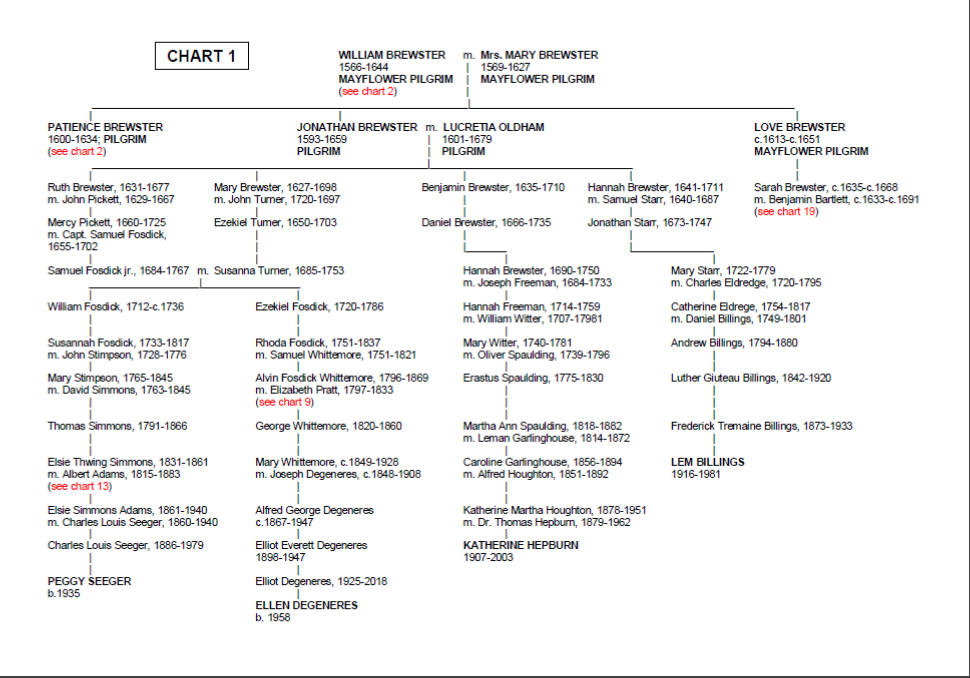BURIED TOGETHER
Partner
Spencer Tracy, Friend Phyllis Wilbourn
Queer Places:
Hawthorne Rd, West Hartford, CT 06107
352 Laurel St, Hartford, CT 06105
201 Bloomfield Ave, West Hartford, CT 06117, USA
Kingswood Oxford School, 170 Kingswood Rd, West Hartford, CT 06119
Bryn Mawr College (Seven Sisters), 101 N Merion Ave, Bryn Mawr, PA 19010
American Academy of Dramatic Arts, 120 Madison Ave, New York, NY 10016
Villa Jasmina, 1050 Summit Dr, Beverly Hills, CA 90210, USA
9191 St Ives Dr,
Los Angeles, CA 90069
30842 Broad Beach Rd, Malibu, CA 90265
Claridge's, Brook Street, Mayfair, London W1K 4HR, UK
The Savoy, Strand, London WC2R 0EU, UK
244 E 49th St, New York, NY 10017
Fenwick, 10 Mohegan Ave, Old Saybrook, CT 06475
Cedar Hill Cemetery, 453 Fairfield Ave, Hartford, CT 06114
 Katharine
Houghton Hepburn (May 12, 1907 – June 29, 2003) was an American actress.
Known for her fierce independence and spirited personality, Hepburn was a
leading lady in Hollywood for more than 60 years. She has been romantically
linked to Irene Mayer Selznick,
Phyllis Wilbourn,
Judy Hollywood,
Billie Burke, Denise Parker,
Nancy Hamilton,
Alice Palache,
Constance Collier. In the
1950s, after
Constance Collier died,
Phyllis Wilbourn,
went to live with Katharine Hepburn, and when she died, she was buried in the Hepburn family plot.
Katherine Hepburn did not make her home with
Spencer Tracy but rather within a
community of women.
Laura Barney Harding, Emily
Perkins,
Constance Collier,
Eve March,
Frances Rich,
Phyllis Wilbourn, and finally
Cynthia McFadden were the ones
to provide anchor, solace, and family. Part of Hepburn’s legend has always
been about forbearance: tears are for sissies. Indeed, the people of her inner
circle would always be those who had the steel to grin and bear:
Laura Barney Harding,
Phyllis Wilbourn,
Irene Selznick,
George Cukor.
Katharine
Houghton Hepburn (May 12, 1907 – June 29, 2003) was an American actress.
Known for her fierce independence and spirited personality, Hepburn was a
leading lady in Hollywood for more than 60 years. She has been romantically
linked to Irene Mayer Selznick,
Phyllis Wilbourn,
Judy Hollywood,
Billie Burke, Denise Parker,
Nancy Hamilton,
Alice Palache,
Constance Collier. In the
1950s, after
Constance Collier died,
Phyllis Wilbourn,
went to live with Katharine Hepburn, and when she died, she was buried in the Hepburn family plot.
Katherine Hepburn did not make her home with
Spencer Tracy but rather within a
community of women.
Laura Barney Harding, Emily
Perkins,
Constance Collier,
Eve March,
Frances Rich,
Phyllis Wilbourn, and finally
Cynthia McFadden were the ones
to provide anchor, solace, and family. Part of Hepburn’s legend has always
been about forbearance: tears are for sissies. Indeed, the people of her inner
circle would always be those who had the steel to grin and bear:
Laura Barney Harding,
Phyllis Wilbourn,
Irene Selznick,
George Cukor.
According to Alan Royle, Kate’s more serious female relationships included
Judy Garland for several years,
Claudette Colbert for over a
decade,
Laura Barney Harding (heiress to the American Express fortune) for much of
her adult life, Judy Holliday for
several months, Jane Loring (film
editor) for years and Elissa Landi.
As for the men in her life there was, of course, Spencer Tracy for decades,
Robert Walker (although she was more a surrogate mother image than lover),
Paul Henreid late in life (until he opted to remain with his wife), agent
Leland Hayward, Howard Hughes,
John Ford, George Stevens, John Barrymore, Jimmy Stewart, Charles Boyer,
Joseph Cotten, Van Heflin, Ernest
Hemingway, Kenneth MacKenna and Robert Mitchum.
Hepburn appeared in a range of
genres, from
screwball comedy to literary drama, and she received four
Academy Awards—a record for any performer—for
Best Actress. In 1999, Hepburn was named by the
American Film Institute as the
greatest female star of
Classic Hollywood Cinema.

by
George Platt Lynes

.JPG)
American Academy of Dramatic Arts
.JPG)
The Savoy, London
.JPG)
Hepburn's New York apartment
.JPG)
Fenwick, Connecticut
Raised in
Connecticut by wealthy,
progressive parents, Hepburn began to act while studying at
Bryn Mawr College. After four years in the theatre, favorable reviews of
her work on
Broadway brought her to the attention of Hollywood. Her early years in the
film industry were marked with success, including an Academy Award for her
third picture,
Morning Glory (1933), but this was followed by a series of commercial
failures that led her to be labeled "box office poison" in 1938.
Filmed in the summer and fall of 1935, Sylvia Scarlett, by a novel
of Compton Mackenzie, was the
story of a girl (Katharine Hepburn)
disguised as a boy who teams up with a con man (Cary
Grant) and falls in love for an artist. It was Hepburn's idea. She brought
the story to George Cukor; he liked
its naughty challenge to traditional male-female relationships. For
screenwriter, they engaged John Collier, a British novelist recently brought
to Hollywood. It was a sympatico collaboration, despite the fact that
Collier was straight. "He was fascinated, just fascinated, by the
queer world," said Don Bachardy,
who, with his lover
Christopher Isherwood, often hosted Collier at their Santa Monica home.
"He wasn't the least bit gay, but he'd pump Chris for information about
parties or dates he'd gone on."
Hepburn
masterminded her own comeback, buying out
her contract with
RKO
Radio Pictures and acquiring the film rights to
The Philadelphia Story, which she sold on the condition that she be
the star. In the 1940s, she was contracted to
Metro-Goldwyn-Mayer, where her career focused on an alliance with
Spencer Tracy. The screen partnership spanned 25 years and produced nine
movies.
Hepburn challenged herself in the latter half of her life, as she regularly
appeared in
Shakespearean stage productions and tackled a range of literary roles. She
found a niche playing middle-aged spinsters, such as in
The African Queen (1951), a persona the public embraced. Three more
Oscars came for her work in
Guess Who's Coming to Dinner (1967),
The Lion in Winter (1968), and
On Golden Pond (1981). In the 1970s, she began appearing in television
films, which became the focus of her career in later life. She remained active
into old age, making her final screen appearance in 1994 at the age of 87.
After a period of inactivity and ill health, Hepburn died in 2003 at the age
of 96.
Hepburn famously shunned the Hollywood publicity machine and refused to
conform to society's expectations of women. She was outspoken, assertive,
athletic, and wore trousers before it was fashionable for women to do so. She
was briefly married as a young woman, but thereafter lived independently. A
26-year affair with her co-star
Spencer Tracy was hidden from the public. With her unconventional
lifestyle and the independent characters she brought to the screen, Hepburn
epitomized the "modern woman" in the 20th-century United States and is
remembered as an important cultural figure.
From across the dining table at Dean
Fred Manning’s
house, Kath Hepburn locked eyes with
Phelps Putnam, a lusty, moody, married, alcoholic poet thirteen years her
senior. Right from the start there was something between them. He called her
the Kid. She called him Phelpie. “I took one look at him,” Hepburn would
remember, “and I was stricken with whatever it is that strickens one at once
and for no reason when one looks at a member of the opposite sex. I was
fascinated.” Sometime probably during her sophomore year, Kath sat down for
lunch at Clynnoc, Dean Manning’s cozy Victorian residence with large windows
overlooking the tennis courts. Across from her sat Putnam, a guest of
Manning’s husband. Put, as friends called him, was of medium height and
slender. Deep-set dark eyes complemented a luxuriant mat of black hair on his
chest and arms. His voice, long and drawn out with a Boston accent, was
invariably hoarse, jagged from years of asthmatic wheezing. Though he was just
a little past thirty, his hair had gone prematurely gray. He possessed a
brooding, Brontëan beauty. In Kath’s besotted opinion, Put’s prominent brow
made for “a very handsome head.” Equally struck was Put. “[A] rising flame /
Of honor and dishonor and / A gong resounding overland,” he wrote in a poem
he’d later acknowledge was inspired by Kath. Just what she was doing lunching
with the dean is unknown; Kath certainly wasn’t a pet of the administration.
But Palache was, and it’s a good bet that she was the conduit through which
Kath came to Putnam’s attention. Hailing from Jamaica Plain, a suburb of
Boston across the river from Palache’s hometown of Cambridge, Put was
acquainted with Palache’s sisters. Dragging Kath along with her to a gathering
at the dean’s, Palache likely made the first introduction. There was another
connection on campus as well: Putnam had a sister, Frances, in Kath’s class,
though it does not appear that they knew each other well. When that lunch
occurred, however, is a bit murky. Hepburn said she met Putnam during the
spring of her senior year. Despite that imprecise statement, Barbara Leaming
offered enormous specificity in her biography of Hepburn. She placed the first
meeting between the two during the May Day celebrations on campus and
described Putnam as an aggressive suitor, inveigling a luncheon invitation at
the dean’s house after seeing Kath perform on stage. Yet there is absolutely
no evidence for this. Dean Manning certainly did not make it a habit to
facilitate meetings between students and her husband’s friend, whose
reputation as a philanderer was well known. The fact that Put had a sister in
Kath’s class would have made Manning even more wary of the potential for
gossip. Actually, from Putnam’s own letters, we can deduce that he met Kath
considerably earlier than her senior year. He would tell
Russell Davenport
that his poem “Marjory” was based on her, the name chosen because it contained
the same number of syllables as “Katharine.” That poem was written in 1926 and
published the following year as part of Putnam’s first collection, Trinc—all
well before his supposed first meeting with Kath in spring 1928.
Hepburn's only husband was Ludlow Ogden Smith, a socialite-businessman from
Philadelphia whom she met while a student at Bryn Mawr. The couple married on
December 12, 1928, when she was 21 and he was 29.[249]
Hepburn had Smith change his name to S. Ogden Ludlow so that she would not be
known as "Kate Smith", which she considered too plain.[33]
She never fully committed to the marriage and prioritized her career.[249]
The move to Hollywood in 1932 cemented the couple's estrangement,[250]
and in 1934, she traveled to Mexico to get a
quick divorce. Hepburn often expressed her gratitude toward Smith for his
financial and moral support in the early days of her career, and in her
autobiography called herself "a terrible pig" for exploiting his love.[251]
The pair remained friends until his death in 1979.[252]
Soon after moving to California, Hepburn began a relationship with her
agent,
Leland Hayward, although they were both married.[65]
Hayward proposed to the actress once they had each divorced but she declined,
later explaining, "I liked the idea of being my own single self."[253]
They were involved for four years.[254]
In 1936, while she was touring Jane Eyre, Hepburn began a relationship
with entrepreneur
Howard Hughes. She had been introduced to him a year earlier by their
mutual friend Cary Grant.[255]
Hughes wished to marry her, and the tabloids reported their impending
nuptials, but Hepburn was too focused on resurrecting her failing career.[256]
They separated in 1938, when Hepburn left Hollywood after being labeled "box
office poison".[257]
In the 1950s, after lesbian actress Constance Collier died, her
"companion," Phyllis Wilbourn,
lived with Hepburn, and was buried in the Hepburn family plot.
Hepburn stuck to her decision not to remarry, and made a conscious choice
not to have children. She believed that motherhood should be a full-time
commitment, and said it was not one she was willing to make.[5]
"I would have been a terrible mother," she told Berg, "because I'm basically a
very selfish human being."[258]
She felt she had partially experienced parenthood through her much younger
siblings, which fulfilled any need to have children of her own.[259]
Rumors have existed since the 1930s that Hepburn may have been a
lesbian or
bisexual, which she often joked about.[260]
In 2007,
William J. Mann released a biography of the actress in which he argued
this was the case and her partner was
Laura Barney Harding.[261]
In response to this speculation about her aunt,
Katharine Houghton said, "I've never discovered any evidence whatsoever
that she was a lesbian."[262]
However, in a 2017 documentary, columnist
Liz Smith, who was a close friend,[263]
attested to the fact that she was.[264][265]
Hepburn stated in her eighties, "I have no fear of death. Must be
wonderful, like a long sleep."[28]
Her health began to deteriorate not long after her final screen appearance,
and she was hospitalized in March 1993 for exhaustion.[284]
In the winter of 1996, she was hospitalized with
pneumonia.[285]
By 1997, she had become very weak, was speaking and eating very little, and it
was feared she would die.[286]
She showed signs of
dementia
in her final years.[287]
In May 2003, an aggressive tumor was found in Hepburn's neck. The decision was
made not to medically intervene,[288]
and she died from a cardiac arrest on June 29, 2003, a month after her 96th
birthday at the Hepburn family home in
Fenwick, Connecticut. She was buried in
Cedar Hill Cemetery in
Hartford. Hepburn requested that there be no memorial service.[289]
Hepburn's death received considerable public attention. Many tributes were
held on television, and newspapers and magazines dedicated issues to the
actress.[290]
American president
George W. Bush said Hepburn "will be remembered as one of the nation's
artistic treasures."[291]
In honor of her extensive theatre work, the lights of Broadway were dimmed for
the evening of July 1, 2003.[291]
In 2004, in accordance with Hepburn's wishes, her belongings were put up for
auction with
Sotheby's
in New York City. The event garnered $5.8 million, which Hepburn willed to her
family.[[292]
Peggy Seeger (born 1935),
Ellen DeGeneres (born 1958),
Katharine Hepburn (1907-2003) and
Lem Billings (1916-1981) all descend from
the same Mayflower Pilgrims, William Brewster and Mary Brewster.

Tony Scupham-Bilton -
Mayflower 400 Queer Bloodlines
My published books:

BACK TO HOME PAGE

- https://en.wikipedia.org/wiki/Katharine_Hepburn
-
https://www.autostraddle.com/10-old-hollywood-stars-who-enjoyed-scissoring-343227/
-
https://www.ebar.com/arts_&_culture/books//222579
-
Mann, William J.. Kate: The Woman Who Was Hepburn (pp.105-106). Henry
Holt and Co.. Edizione del Kindle.
-
Dictionnaire historique des homosexuel.le.s célèbres – October 19, 2017
French Edition by Michel Larivière
 Katharine
Houghton Hepburn (May 12, 1907 – June 29, 2003) was an American actress.
Known for her fierce independence and spirited personality, Hepburn was a
leading lady in Hollywood for more than 60 years. She has been romantically
linked to Irene Mayer Selznick,
Phyllis Wilbourn,
Judy Hollywood,
Billie Burke, Denise Parker,
Nancy Hamilton,
Alice Palache,
Constance Collier. In the
1950s, after
Constance Collier died,
Phyllis Wilbourn,
went to live with Katharine Hepburn, and when she died, she was buried in the Hepburn family plot.
Katherine Hepburn did not make her home with
Spencer Tracy but rather within a
community of women.
Laura Barney Harding, Emily
Perkins,
Constance Collier,
Eve March,
Frances Rich,
Phyllis Wilbourn, and finally
Cynthia McFadden were the ones
to provide anchor, solace, and family. Part of Hepburn’s legend has always
been about forbearance: tears are for sissies. Indeed, the people of her inner
circle would always be those who had the steel to grin and bear:
Laura Barney Harding,
Phyllis Wilbourn,
Irene Selznick,
George Cukor.
Katharine
Houghton Hepburn (May 12, 1907 – June 29, 2003) was an American actress.
Known for her fierce independence and spirited personality, Hepburn was a
leading lady in Hollywood for more than 60 years. She has been romantically
linked to Irene Mayer Selznick,
Phyllis Wilbourn,
Judy Hollywood,
Billie Burke, Denise Parker,
Nancy Hamilton,
Alice Palache,
Constance Collier. In the
1950s, after
Constance Collier died,
Phyllis Wilbourn,
went to live with Katharine Hepburn, and when she died, she was buried in the Hepburn family plot.
Katherine Hepburn did not make her home with
Spencer Tracy but rather within a
community of women.
Laura Barney Harding, Emily
Perkins,
Constance Collier,
Eve March,
Frances Rich,
Phyllis Wilbourn, and finally
Cynthia McFadden were the ones
to provide anchor, solace, and family. Part of Hepburn’s legend has always
been about forbearance: tears are for sissies. Indeed, the people of her inner
circle would always be those who had the steel to grin and bear:
Laura Barney Harding,
Phyllis Wilbourn,
Irene Selznick,
George Cukor.

.JPG)
.JPG)
.JPG)
.JPG)


